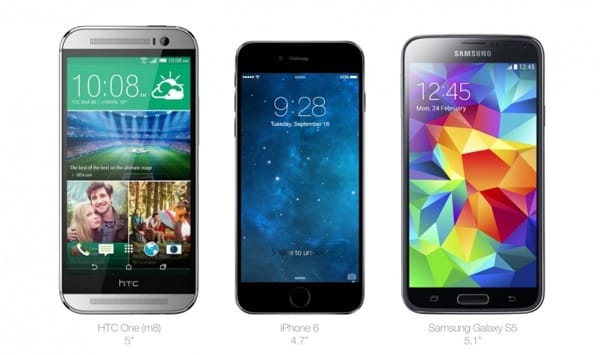News: OLED phone panels are now cheaper than LCDs

Most of the high-end smartphones have been using AMOLED displays rather than LCD in recent years. Most manufacturers have realised the obvious benefits of improved battery life and always-on features such as Samsung’s “Always-On Display” showing key information at all times without draining the battery.
The technology is now used in a plethora of devices, from phones to smartwatches and even top of the line televisions. With more demand comes lower prices, and now a milestone has been reached in the stand-off between LCD and AMOLED displays. A recent report by IHS Technology claims that production costs for LCD and AMOLED displays for 5-inch devices are $14.60 and $14.30 respectively, meaning that for the first time AMOLED screens are cheaper than their LCD counterparts.

Why are OLED-based screens such a big deal? Some of the advantages over LCD include:
- Thinner, lighter and more flexible displays are possible
- Generally brighter than LCD screens and do not require backlighting
- Consume less power than LCDs (where most of the power goes to the backlight)
- A larger field of view, typically around 170 degrees
- A higher contrast ratio
 Display manufacturers such as Samsung have been key in the stratospheric rise of AMOLED, especially as they also control much of the Android smartphone market. On the other hand, Apple has stuck to LCD displays for the majority of its products, aside from the Apple Watch. Samsung not only produces the screen technology itself, but uses it in its flagship Android devices such as the Galaxy S7 line.
Display manufacturers such as Samsung have been key in the stratospheric rise of AMOLED, especially as they also control much of the Android smartphone market. On the other hand, Apple has stuck to LCD displays for the majority of its products, aside from the Apple Watch. Samsung not only produces the screen technology itself, but uses it in its flagship Android devices such as the Galaxy S7 line.
IHS says prices for AMOLED displays started to fall in December last year, and expects a similar drop over the coming months. Of course, once any such technology reaches a critical mass, lower-priced budget devices also see the trickle down effect. But does this mean flagship phones might see a reduction in price for the end-consumer? Unfortunately, that’s unlikely because the screens aren’t usually the driving force in high prices to begin with, but it’s good to know that cheaper phones will soon benefit from better quality displays.
As for Apple’s plans, recent reports have suggested that iPhones may adopt some form of OLED in 2018, possibly supplied by troubled Japanese electronics company Sharp. On a positive note, Apple’s main contract manufacturer, Taiwan-based Foxconn, is in the final stages of negotiating a takeover of Sharp, which should give a shot in the arm to their OLED strategy.



